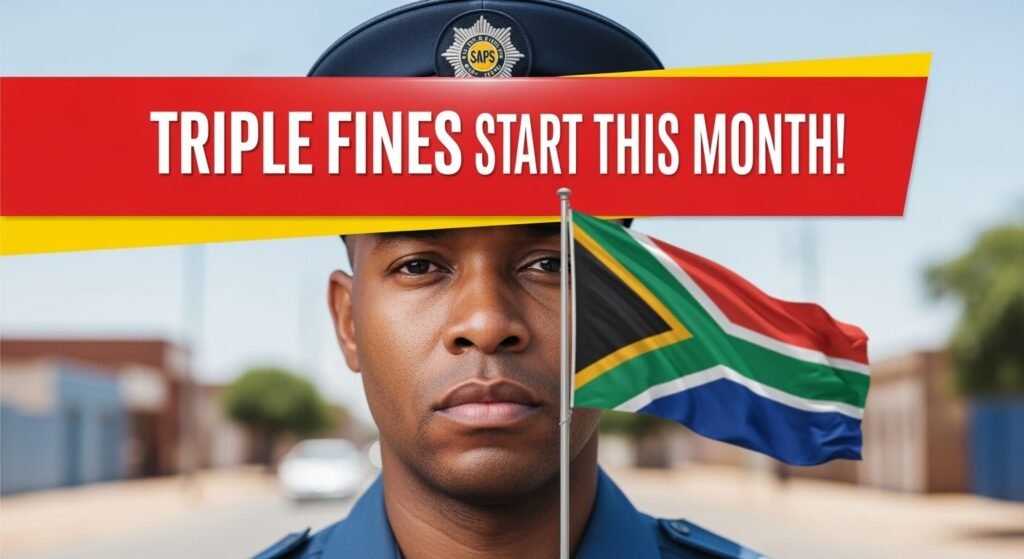Traffic fines tripling: Have you heard the news? Starting this month, drivers across the country need to be extra cautious as new traffic regulations are set to dramatically increase penalties for common violations. I’ve been reviewing the latest changes, and what I found is quite alarming. Your typical speeding ticket that used to cost around $100 could now set you back $300 or more. These new rules aren’t just about generating revenue—they’re part of a comprehensive effort to reduce accident rates and improve road safety. But for many motorists who aren’t aware of these changes, the financial shock could be significant. Are you prepared for how these new regulations might affect your driving habits?

What Are The New Traffic Fine Regulations?
The new traffic fine structure represents the most significant overhaul of driving penalties in the past decade. Specifically, the regulations target what authorities call “high-risk behaviors” with substantially increased fines. Speeding violations will see the most dramatic increases, with fines tripling for those exceeding limits by more than 15 mph. Similarly, distracted driving penalties—particularly those involving mobile phone use—will increase from an average of $150 to approximately $450 in most jurisdictions.
Red light violations and failure to yield penalties are also set to triple, jumping from typical fines of $75-100 to $225-300. The new structure also introduces escalating penalties for repeat offenders, with second violations within a 12-month period potentially facing additional surcharges. I should note that these traffic fines tripling will be accompanied by stricter enforcement measures, including expanded camera networks and increased patrol presence in high-violation areas.
 South Africa Weekend Weather September 2025 – Authorities Warn of Intense Rainfall This Week
South Africa Weekend Weather September 2025 – Authorities Warn of Intense Rainfall This Week
Why Are Traffic Fines Increasing So Dramatically?
Transportation officials cite alarming statistics as the primary motivation behind these increases. According to recent data, traffic fatalities have risen by 12% over the past three years, with distracted driving and speeding identified as contributing factors in over 60% of serious accidents. By implementing these substantially higher penalties, authorities aim to create a genuine financial deterrent that makes drivers think twice before breaking traffic laws.
There’s also an economic component to consider. Many municipalities have faced budget constraints affecting infrastructure maintenance and safety programs. The increased revenue from traffic fines tripling will be partially directed toward road safety improvements, including better signage, enhanced crosswalks, and expanded educational campaigns. While some critics argue this amounts to taxation through enforcement, proponents maintain that the primary goal remains behavioral change rather than revenue generation.
When Will These Changes Take Effect?
Implementation of the new fine structure begins on the first day of this month, though there will be a phased rollout across different jurisdictions. Most major urban areas will see immediate enforcement, while some rural counties may have a 30-day grace period during which warnings may be issued instead of the new higher fines. I’ve checked with several local police departments who confirmed they’ve already updated their systems to reflect the new penalties.
It’s worth noting that violations occurring before the implementation date but processed afterward will still be subject to the previous fine structure. However, any traffic infractions committed after the effective date will face the full impact of the tripled fines. The authorities have emphasized there will be no exceptions or reductions based on claims of being unaware of the new regulations, so staying informed is crucial for all drivers.
 R12,500 Youth Grant September 2025 – SASSA Shares Full Application Procedure With Applicants
R12,500 Youth Grant September 2025 – SASSA Shares Full Application Procedure With Applicants
How Can You Avoid These Hefty New Penalties?
The most obvious solution is straightforward: follow traffic laws diligently. However, I understand that even careful drivers occasionally make mistakes or find themselves in situations where violations might occur. To help minimize your risk, consider investing in technology that assists with compliance. Modern GPS systems can alert you to speed limit changes, while dash cams can provide evidence in disputed situations.
- Set up automatic speed alerts on your phone or GPS device
- Consider defensive driving courses that may provide insurance discounts
- Use hands-free technology for any necessary communication while driving
- Allow extra travel time to avoid feeling rushed and making poor decisions
Additionally, familiarize yourself with specific high-enforcement zones in your regular driving routes. Many municipalities publish information about areas with automated enforcement or increased patrol presence. Being particularly vigilant in these locations can help you avoid becoming subject to the new traffic fines tripling policy.
Real-World Impact
Just last week, I spoke with Michael, a delivery driver from Portland, who received one of the first tickets under the new system. His failure to come to a complete stop at a stop sign—something that would have previously resulted in an $85 fine—cost him $255. “I had no idea the penalties had changed so dramatically,” he told me. “That’s almost half my weekly pay. I definitely can’t afford to make that mistake again.” Michael’s experience highlights how these changes can catch unsuspecting drivers off guard and create significant financial hardship.



